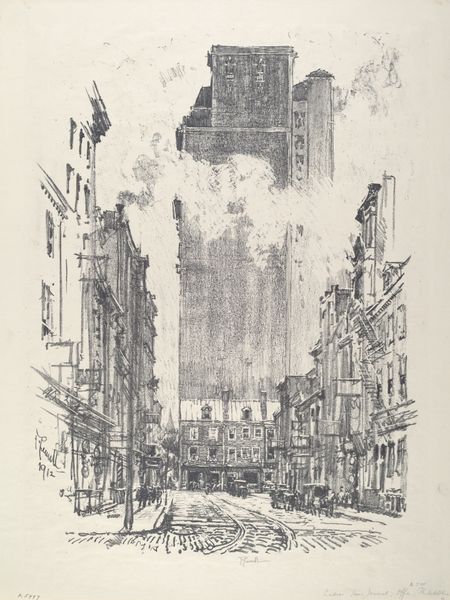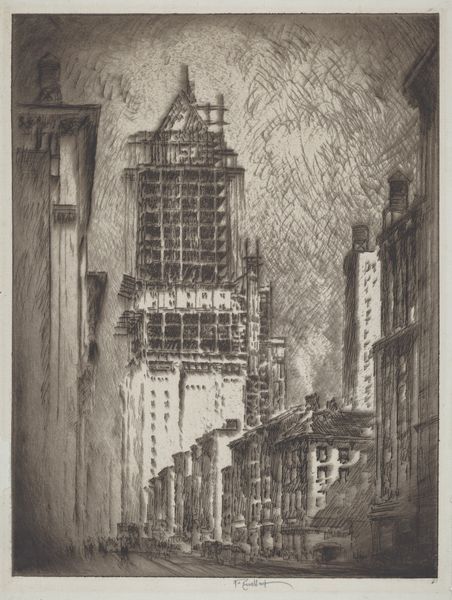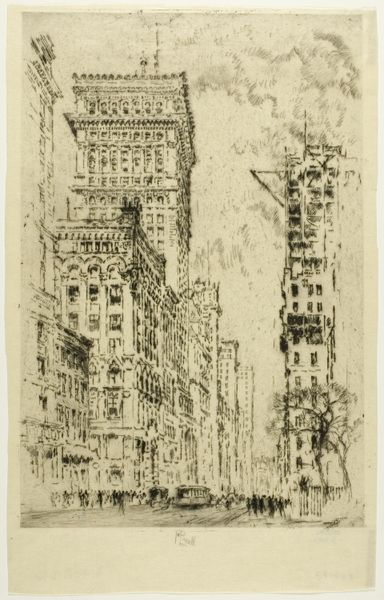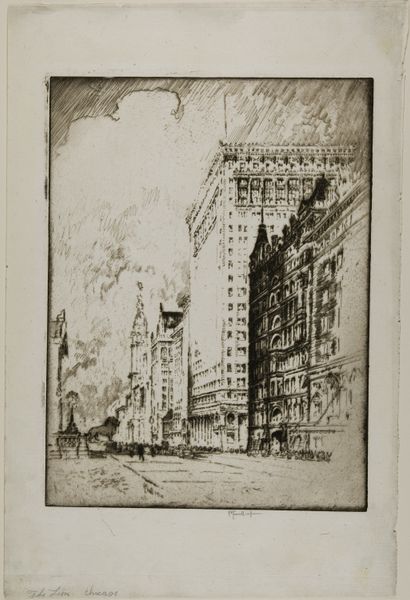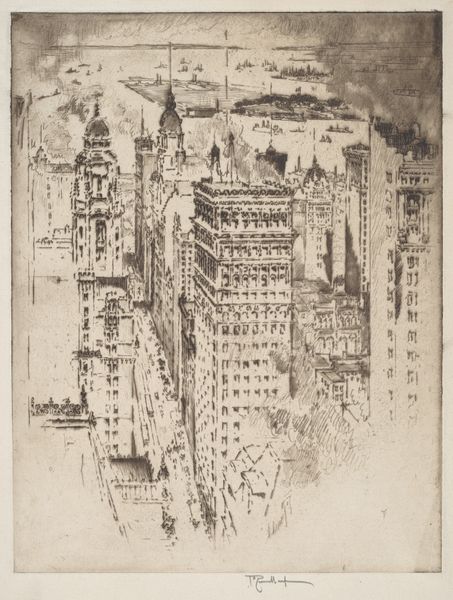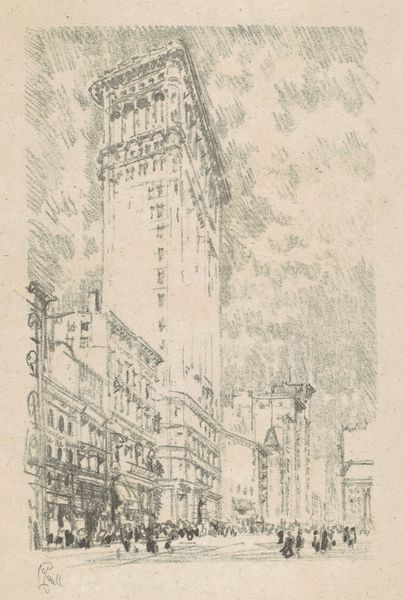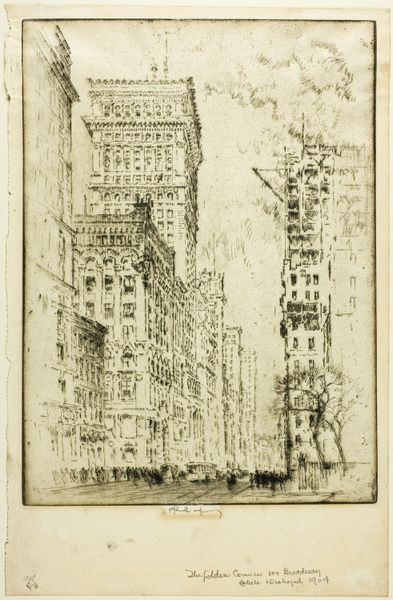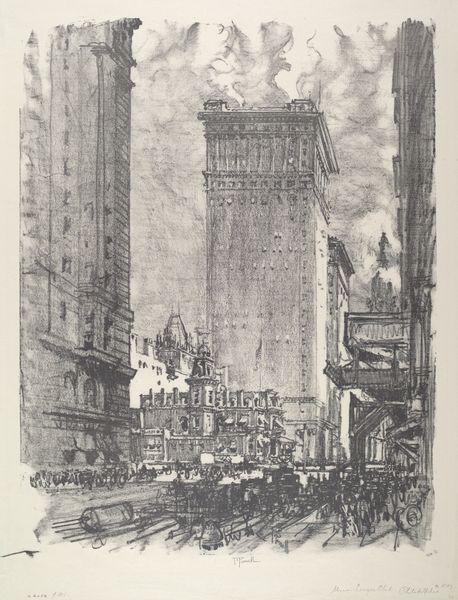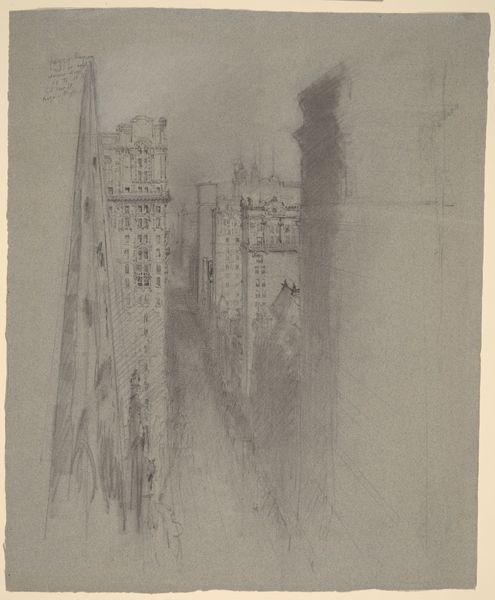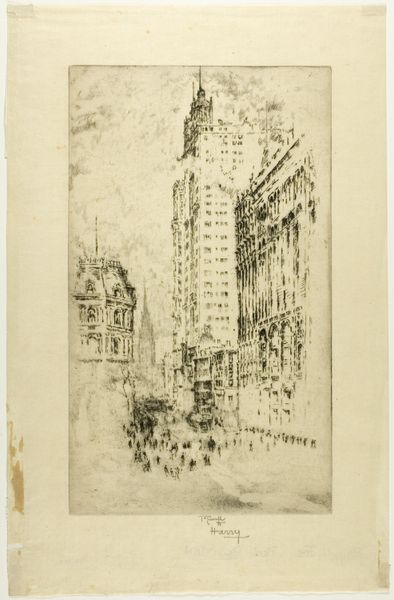
print, etching
# print
#
etching
#
landscape
#
etching
#
cityscape
#
modernism
Copyright: National Gallery of Art: CC0 1.0
Editor: This is Joseph Pennell's "From Fulton Street," an etching from 1910. I find the haze in the work, almost obscuring some of the buildings, really intriguing. It evokes a strong sense of the city’s industrial atmosphere. What do you see in this piece, considering the time it was created? Curator: What strikes me is how Pennell, an American artist, engages with European modernist aesthetics to portray the American city. Look at the soaring skyscrapers—they become almost ethereal, monumental, but softened by that atmospheric haze you mentioned. This was a period of immense urban expansion, tied to industrial growth and immigration. Pennell presents this dynamism, but through a lens that obscures clear-cut celebration. Is it awe, or a critique of the relentless drive of progress? Editor: That's a really interesting point. So, it's less about simply glorifying the skyscrapers and more about exploring the ambiguities of progress at the time? Curator: Exactly! Think about the public perception of cities at the time. On one hand, urban centers were hubs of innovation, opportunities, and cultural mixing. But on the other hand, they were associated with poverty, overcrowding, and social anxieties. Artists were tasked to grapple with the rapid changes and societal issues; how the imagery that circulated in society were impacting people. How do you think he portrays these issues here? Editor: The etching technique, with its fine lines and gray tones, does add to the slightly melancholic mood. It doesn't have the vibrancy one might expect from a city scene. So he’s drawing attention to social issues. I wonder, would it have had that effect at the time? Curator: Undoubtedly. While the print seems quiet to us now, compared to later bold modernist statements, it still subtly conveys a questioning gaze towards unchecked urban development. Pennell's 'From Fulton Street' serves as a reminder that depictions of even the most celebratory subject matters often contain hidden narratives shaped by prevailing social forces. Editor: I never considered the etching style as potentially part of that critique, but that totally changes how I see the piece. Thanks! Curator: Absolutely. Looking at art through a historical and cultural lens opens up layers of understanding!
Comments
No comments
Be the first to comment and join the conversation on the ultimate creative platform.


